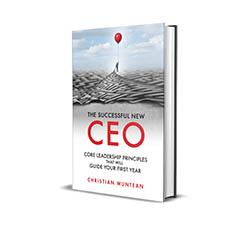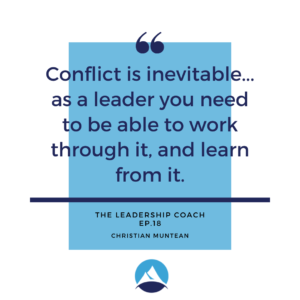3 Questions That Reliably Inspire Employee Motivation

 The leader I spoke with was frustrated. It seemed like issues were popping up everywhere. He was facing conflict on his team. Employees didn’t seem motivated. Departments wouldn’t play nice together. There was a general sense of organizational malaise. Personally, he sounded tired. Unfocused. Pessimistic.
The leader I spoke with was frustrated. It seemed like issues were popping up everywhere. He was facing conflict on his team. Employees didn’t seem motivated. Departments wouldn’t play nice together. There was a general sense of organizational malaise. Personally, he sounded tired. Unfocused. Pessimistic.
I started to recount all the unique stressors that he and his company experienced this year. Some were directly related to COVID and the tumultuous election season. Some were unique organizational challenges and changes. Some were personal to him and his family.
“You’ve been through a lot.” I reflected. “Your people have been through a lot. Given everything they’ve been through – what you are describing makes perfect sense.”
People are not machines. We create our own stress, pick up on the stress of others, and react to ambient stress. It wears people out. Creates friction. Sets the conditions for disorganization, conflict, lack of focus, reduced productivity, low morale. If we aren’t careful, we can accidentally reflect and focus that stress back into our organizations.
How do you motivate employees through challenging times?
I love this quote from Franklin D. Roosevelt, “A smooth sea never made a skilled sailor.”
Leadership isn’t needed when the times are calm and the way ahead is clear. It’s needed in chaos. Or when people are tired. Or when the future looks bleak or uncertain. This seems obvious, but it’s often forgotten. Leadership is a relationship. Leaders lead people. Our work is people.
We may have other responsibilities. But the “leader” part of our title or job description is about people. During challenges, when people are struggling or demotivated – the leader has to dig deep into the “people” side of leadership. This starts by answering these three questions:
- What is most important to us as leaders?
- What is most important to the people we lead?
- How can we connect these two?
Motivation, especially through challenging times, comes from grounding yourself and your people in your common interests and goals.
Question One: What is most important to us as leaders?
A new executive was facing an acute crisis. She didn’t know what to do. I asked her to review the organizational values and vision and see what guidance came from that. Her response, “Those things don’t help.”
Normally, she’d be right. Many organizations develop these as an intellectual or marketing exercise. Once completed, they are often forgotten. But, I knew her organization well and had helped them do deep work on defining their values and vision and connecting them to the culture they wanted to build.
We were on the phone. I asked her to pull up their short value and vision document. She read through it. In her voice, I could tell she was recalling her own values and what attracted her to this company. I could hear her thinking out loud as the answer for moving forward became clear. All she did was read through their values and vision statement. It was like pulling out a GPS.
Leaders need personal clarity about their values. About their purpose. We often get lost in the weeds or we just forget. The more these statements reflect what is actually important to you – and what you intend to achieve – the more useful they are as tools. They are the leader’s equivalent of a carpenter’s measuring tape and pencil. Carry them everywhere and use them often.
Question Two: What is most important to the people we lead?
The people you lead are motivated by many things. Typically, they boil down into some variant of what I call the Three S’s:
- Security: They want to feel safe financially, relationally, physically, etc.
- Significance: They want to feel valued and like they are contributing to something of value.
- Satisfaction: They want to feel like they can experience some of “the good life” – a little peace, contentment, enjoyment, or happiness.
The more that someone can realize one or more of the Three S’s through their work, the more motivated they will be. Conversely, if someone feels that any of those three are threatened or will not be achieved through their work, you can expect them to be high unmotivated. It’s pretty simple.
Question Three: How do we connect these two?
A company was struggling to attract high performers. I asked how they recruited. Because they were desperate for employees, they used the lowest common denominator language to try to get people to apply. Through our conversation, they changed this. Their recruiting language and processes began to reflect the culture and expectations – informed by their values and vision.
Unsurprisingly, they started to attract people motivated by those values and vision. The key to motivating your workforce is not to motivate them. It’s by connecting to the motivation that is already within them.
The better you know what is important to them and help them see (or create ways) for their motivations to be met through working with you – the more of their motivation you’ll see. In some cases, you’ll both discover that your organization isn’t the right fit for their goals. That’s ok.
Leaders bring clarity
The result of leaders doing the usually invigorating, sometimes challenging, work of answering the questions? A strong, positive increase in employee motivation.
Take good care,
Christian
The Successful New CEO – FREE BOOK OFFER
As an executive coach, I’ve found that the experiences for new executives (or experienced executives in new roles) tend to touch on familiar themes. No one’s situation is the same. But there are common principles that, when followed, do guide executives to success. I introduce those core principles in my new book, The Successful New CEO. I’d like to give you a free copy (just pay shipping)!
situation is the same. But there are common principles that, when followed, do guide executives to success. I introduce those core principles in my new book, The Successful New CEO. I’d like to give you a free copy (just pay shipping)!
The book is divided into four parts:
- Becoming an Executive: Leaders can only lead out of who they are. How do you become the kind of person who successfully and gracefully inhabits this role?
- Seven Essential Executive Skills: The skills that earned you this new role may not be the ones that you need in the role. What are the key leadership skills that become even more important at the executive level?
- Leading Your Leadership Team: More than likely, you’ll be leading other leaders. How do you lead a confident, effective leader? How do you build a team out of leaders?
- First Things: Where do you start? How do you quickly build credibility and engagement? What is too fast or too slow?
The goal of The Successful New CEO is to help you quickly gain the confidence of your team, successfully address the issues you will discover, score early wins, and set a course for a fruitful future.
If you’d like to see how this book will benefit you or someone you know, I’d like to make it available to you for free! Click Here.
Find the value of your company with my free assessment tool: The Value Builder System
The Value Builder System™ is a 13-minute online questionnaire that evaluates your business on the eight factors that contribute more to its attractiveness and value. These factors are scored on a scale of 1-100. Businesses that score over 80 are likely to command 70%-100% higher value than others.
In my podcast, THE LEADERSHIP COACH, we explore effective, high impact and enjoyable leadership. We talk about personal development and the attributes that all effective leaders possess. I interview other leadership experts who share their knowledge and tips to help you build the confidence to lead and learn the habits of good decision-making.
Opportunities
Free Resource: How To Accomplish More Without Doing More is a workbook I created to walk leaders through a process of helping you own your calendar, liberate your time, and still get more done. Download it for free!
Executive and Leadership Coaching: Do you feel overwhelmed? Are you not getting the results you expect from the effort you are putting in? Do you find yourself facing similar challenges time and time again? Would you like to change specific ways of relating or reacting? If you would like to experience predictable, measurable growth Contact me.
Profitable Exit Strategy Workshop: Are you a business owner or partner? Are you over 55? Are you starting to think about exiting your business or active management in the next 3-5 years?
- Are you curious about what your business might be worth?
- Would you like to discover the specific steps you need to take to increase its value and become highly attractive to a buyer?
- Are you planning on handing it over to family or employees and you want to ensure long-term success?
If so, contact me now
Categories
Get Christian’s Newest Book: Train to Lead

Download my free 10-page eBook:
How To Accomplish More Without Doing More:
Eight Proven Strategies To Change Your Life
Discover how to save eight hours during your workweek-even if you're too busy to even think about it. The resource every maxed out executive needs.
